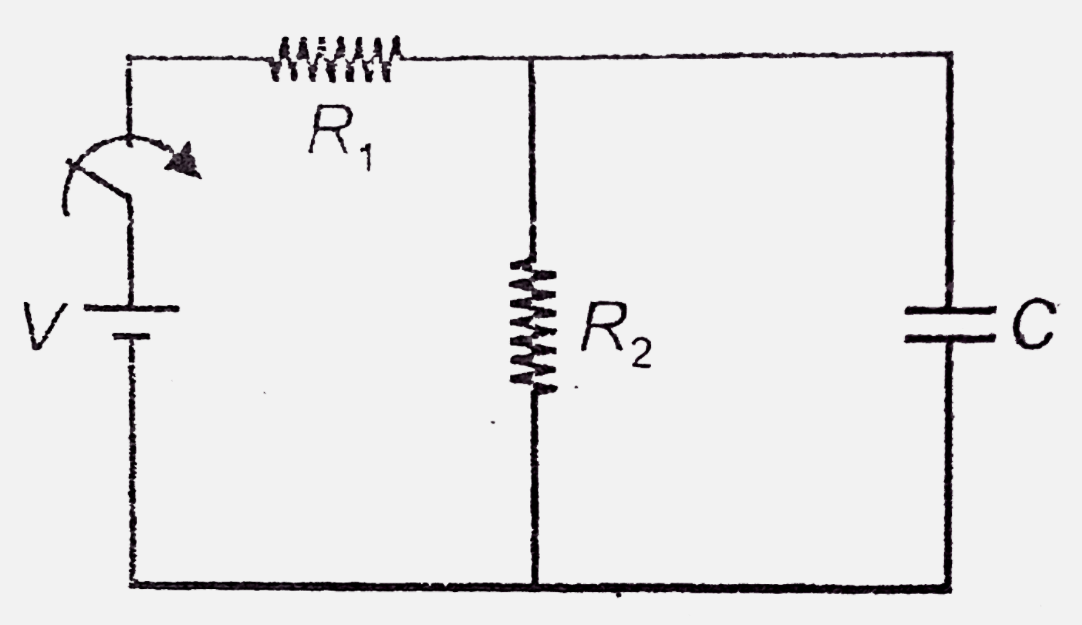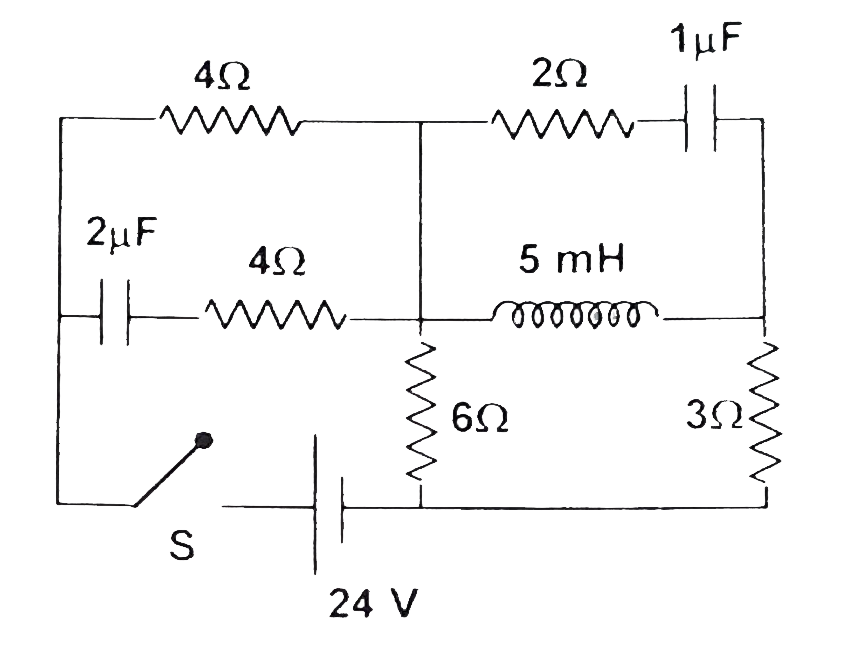Consider the circuit shown. Switch is closed at t=0. Find the current through the battery as a function of time. Initially capacitor was uncharged.

VR1(R1+R2)[R1+R2e−(R1+R2)tR1R2C]
Topper's Solved these Questions
- CURRENT ELECTRICITYBook:AAKASH INSTITUTE ENGLISHChapter:CURRENT ELECTRICITYExercise:ASSIGNMENT SECTION-J
Explore 10 Videos
- CURRENT ELECTRICITYBook:AAKASH INSTITUTE ENGLISHChapter:CURRENT ELECTRICITYExercise:ASSIGNMENT SECTION-H ( MULTIPLE TRUE-FALE TYPE QUESTIONS)
Explore 5 Videos
- COMMUNICATION SYSTEMS Book:AAKASH INSTITUTE ENGLISHChapter:COMMUNICATION SYSTEMS Exercise:ASSIGNMENT SECTION D (Assertion-Reason)
Explore 10 Videos
- DUAL NATURE OF RADIATION AND MATTER Book:AAKASH INSTITUTE ENGLISHChapter:DUAL NATURE OF RADIATION AND MATTER Exercise:ASSIGNMENT (SECTION-D)
Explore 10 Videos
Similar Questions
In the circuit shown, switch S is closed at time t=0. Find the current through the inductor as a function of time t.

View SolutionIn the circuit shown below, the key K is closed at t =0. The current through the battery is

View SolutionIn the circuit shown below, the key K is closed at t = 0. The current through the battery is

View SolutionIn the circuit shown, the switch 'S' is closed at t=0. Then the current through the battery steady state reached is

View SolutionIn the circuit shown in fig, if the switch S is closed at t=0 , the capacitor charges with a time constant

View SolutionSwitch is closed at t=0 then the current in the circuit at t=L2R is
_PHY_E06_157_Q01.png)
View SolutionAssertion : The switch S shown in the figure is closed at t=0. Initial current flowing through battery is ER+r
Reason : Initially capacitor was uncharged, so resistance offered by capacitor at t=0 is zero

View SolutionConsider the circuit shown in figure. The current through the battery a long time after the switch S is closed is:

View SolutionIn the circuit shown in figure switch S is closed at time t=0

Current I from the battery at time t is given by
View Solutioninitially the switch is open for a long time. Now the swithc is closed at t=0. find the caharge on the rightomost capacitor as a function of time given that it was initially unchanged.

View Solution

